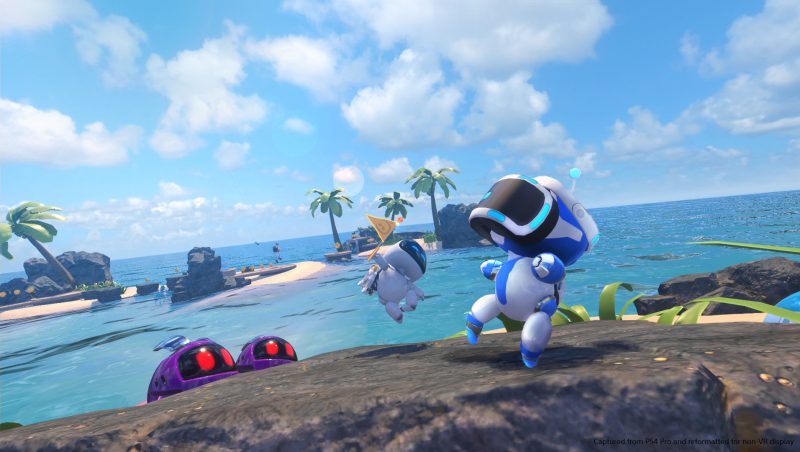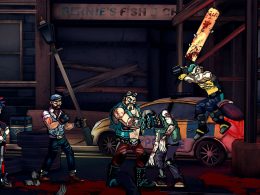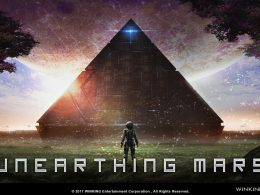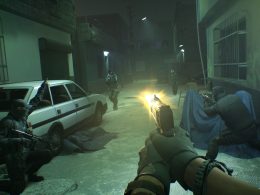Do you remember "Playroom VR"? The free mini-game collection was released to coincide with the launch of PlayStation VR in October 2016 and featured lots of cute robots that had to master all kinds of challenges. In one mini-game, for example, you had to guide a blue and white tin can called Captain Astro through a level from above and find 20 lost robot friends.
With Astro Bot: Rescue Mission, developer ASOBI! Team and Sony's Japan Studio take up this basic gameplay concept again and use it as the starting point for an incredibly charming VR adventure. An adventure that we could only tear ourselves away from when the credits scrolled across the screen. Hand on heart: We have already tested many VR games, but "Astro Bot: Rescue Mission" is something very special and perfectly adapted to the medium VR in almost every respect!
This begins with the fantastically animated intro sequence in game graphics. In it, Captain Astro's spaceship whirs through space while he and his robot crew dance euphorically to hip music and have a great time. But the exuberant party atmosphere lasts only for a short time, because a flying saucer suddenly appears out of nowhere, from which a slimy green-humoured tentacled creature peels itself out. The strange creature takes a quick look around and notices that the front of the spaceship looks like a brand new pair of PSVR glasses - which of course it now desperately wants.
Astro and his gang suspect the impending disaster and step on the gas ... But too late. With full force, the alien tears the glasses off the spaceship, which shatters into five pieces a short time later. One after the other, the pieces and their crew glide towards the horizon, forming five twinkling stars a short time later. As expected, only Captain Astro remains, who of course immediately sets out to save his crew of 213.
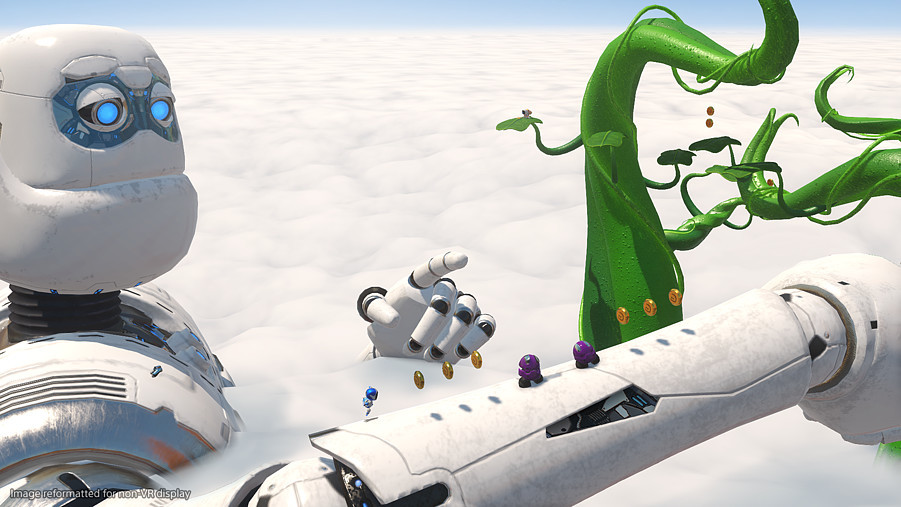
What follows is a passionately designed jump-and-run adventure that is bubbling over with gameplay wit and VR-optimised gameplay mechanics. Mechanic number one: While you run, jump and fight your way to the finish of the mostly forward-scrolling levels, you have to continuously look around in all directions. This is the only way to discover each of the eight crew members in a level.
Always look around
We don't want to give too much away, but the makers have hidden the little guys really well in places! In the very first level, for example, a robot is crouching at the bottom of a deep ventilation shaft and can only be seen if you look down from a certain angle. As the game progresses, the hiding places become more and more sophisticated and require, among other things, that you bend forward, peek around the corner or turn 180 degrees at a certain point in the level. This may look strange on gameplay videos, but in VR it is precisely this that creates an incredibly high level of immersion.
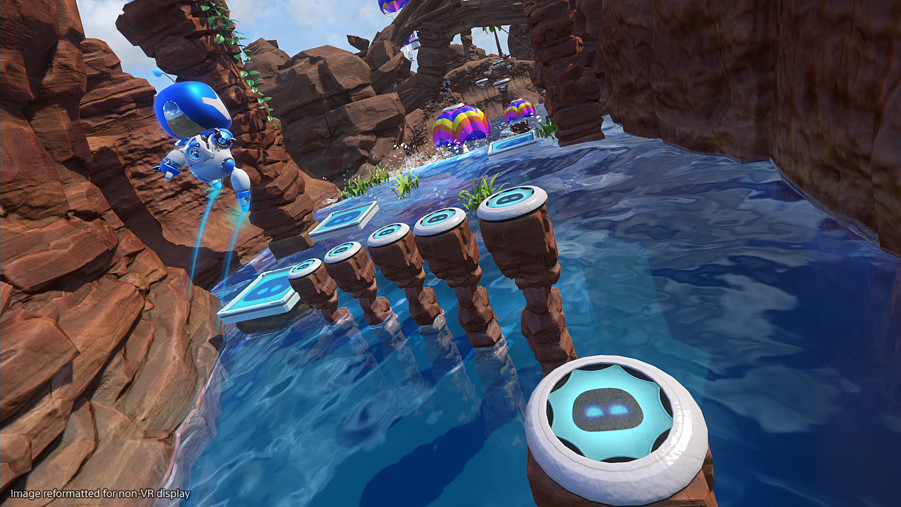
In general, it's worth meticulously searching every nook and cranny of the level, because often there are glowing containers, huge fern leaves or crumbling rock walls behind which your robot buddies seek protection from prying eyes. A great idea and great for the feeling of being right in the middle of things: once a robot has been rescued, it doesn't just vanish into thin air or run away, but ignites its thrusters, sets down on the touchpad of the DualShock 4 controller and then makes itself comfortable there. Speaking of the DualShock 4 controller: As is typical for VR, it is always visible in virtual reality and is, so to speak, the interface between you and Captain Astro.
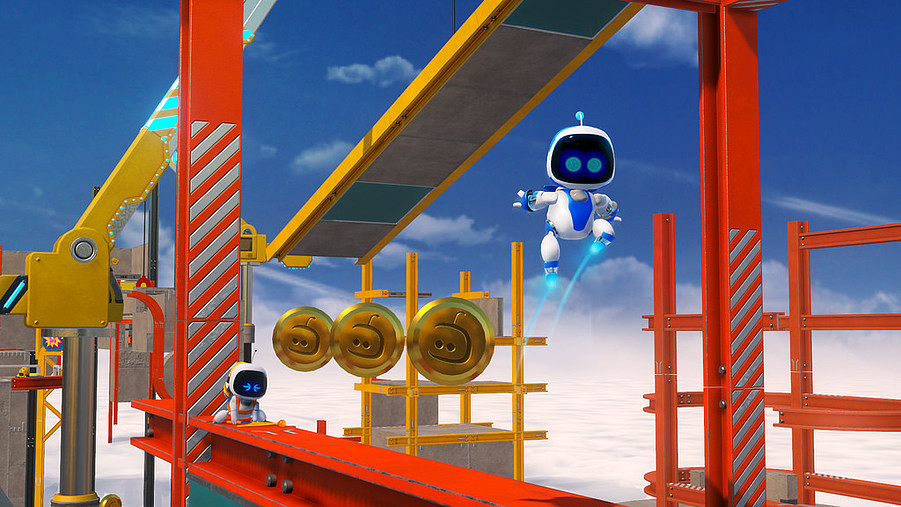
Crazy tools
But not only precise jumps and constant looking around are important to master all 20 levels of the campaign, the correct use of various tools also plays a decisive role. The game starts with a practical grappling hook gadget. As soon as it is unlocked, it is added to your virtual DualShock 4 controller as a kind of upgrade.
Then simply swipe forward on the touchpad and the hook whizzes off and - assuming precise aiming - grabs onto marked anchor points in the environment. What remains is a tightly stretched rope, which Captain Astro now uses as a slide or bridge, for example. In other places, you can use the rope to tear down walls, use it as a trampoline or use it to pull out the wiggly teeth of a kind of King Kong.
In the course of the game, further upgrades are added. The water cannon, for example, extinguishes fires, washes away sticky puddles of oil, sets shovel wheels in motion and makes flowers bloom. Interacting with the throwing star catapult is similarly fun. Now you can fire shurikens to shatter cobwebs, cut down trees or create small platforms on which Astro can advance to new areas of the level. Heavenly!
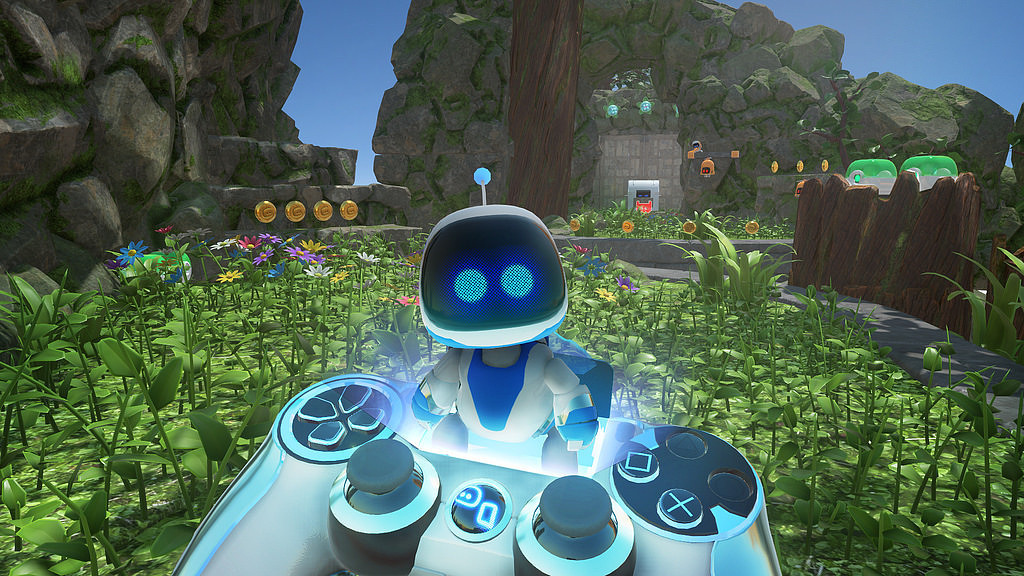
Full screen is an understatement
Once the end of a game world is reached, there is a showdown with a boss opponent, which is typical of the genre. The special thing about "Astro Bot" is that the bosses are really gigantic and make the hero look like a small insect in direct comparison. You can already see this difference in size quite well on screenshots, but it looks even more impressive in VR.
Not least because the bosses keep coming frighteningly close to you. The guardian of world two, for example - a lava-resistant giant octopus - attacks you with its metre-long tentacles and spits glowing fireballs at you.
By the way, such duels are not too difficult or even frustrating. On the one hand, because a movement pattern crystallises quite quickly that you can learn by heart. On the other hand, the developers give you two more life energy hearts in boss fights. Only when these have expired do you have to start the fight all over again.
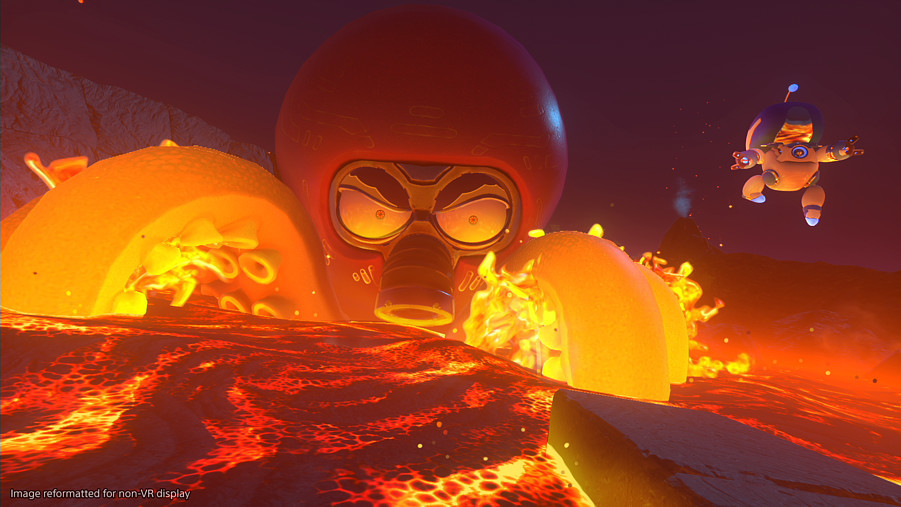
Declaration of war on boredom
With a total of 20 campaign levels, just as many additional challenges and a walk-in hero spaceship, "Astro Bot" certainly can't hold a candle to the genre leader "Super Mario Odyssey" in terms of scope and gameplay. In terms of variety and inventiveness, the makers of "Astro Bot" still don't need to hide behind Nintendo's chart-topper.
An excellent example of this is the first underwater level, which in places really feels as if you are diving into the cool water yourself. Or take world 3-3, where Captain Astro is swallowed by a whale and has to move through its belly in order to be catapulted back into the open air through its nostrils.
The highlight from a level design point of view: There are strong waves in the belly of the whale, which have to be overcome with the help of a swimming ring. Grandiose! Just like the lush green climbing plant level, the wild ride through a volcano or the brightly coloured sunflowers that bob along with our head movements.
Applause also for the idea of the chameleon placed in each level, which cleverly adapts to the colours of its environment. If you find the reptile, you are rewarded with the aforementioned additional challenges, i.e. particularly tricky levels that offer no reset points and must be completed in a given time.





